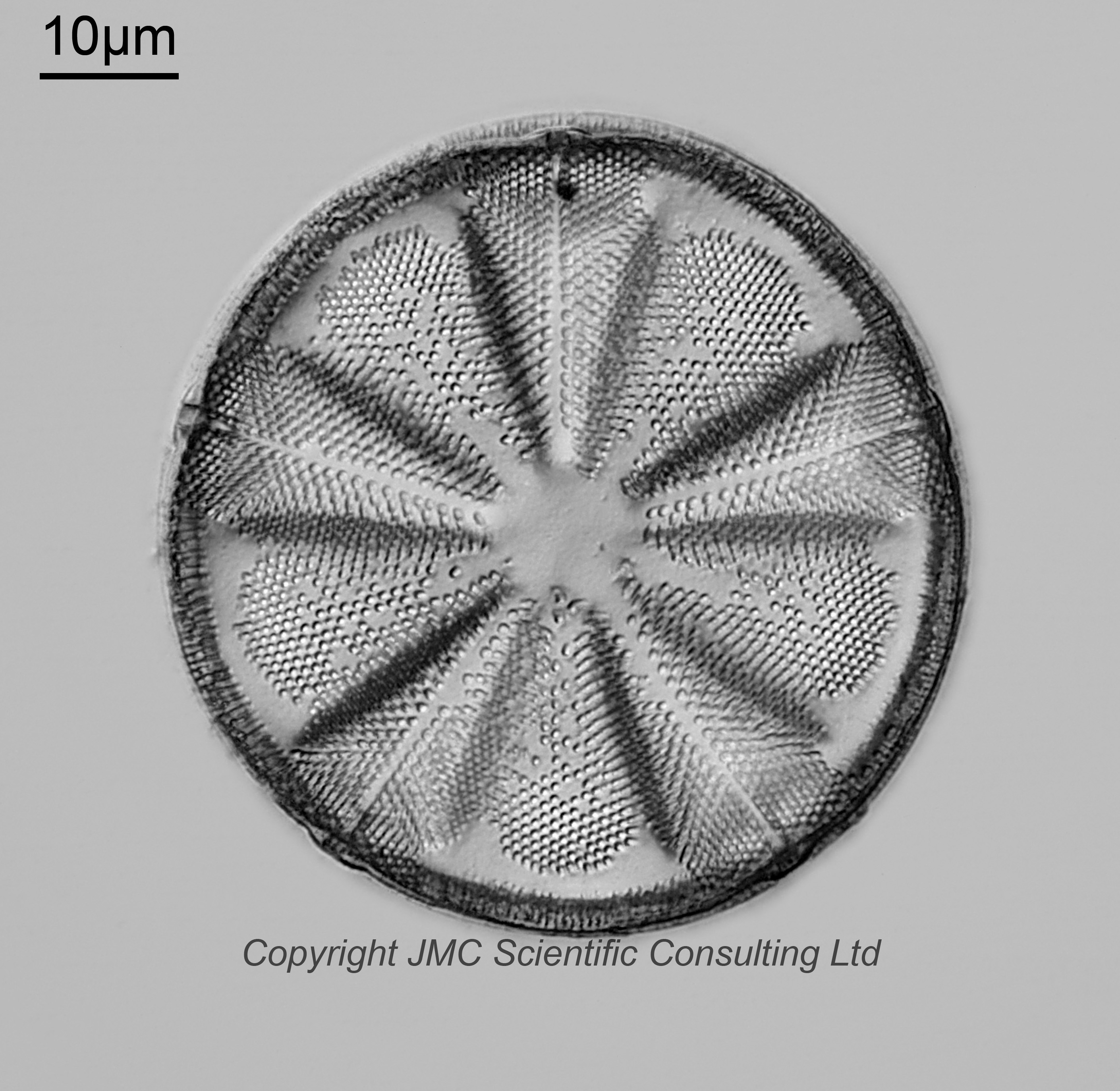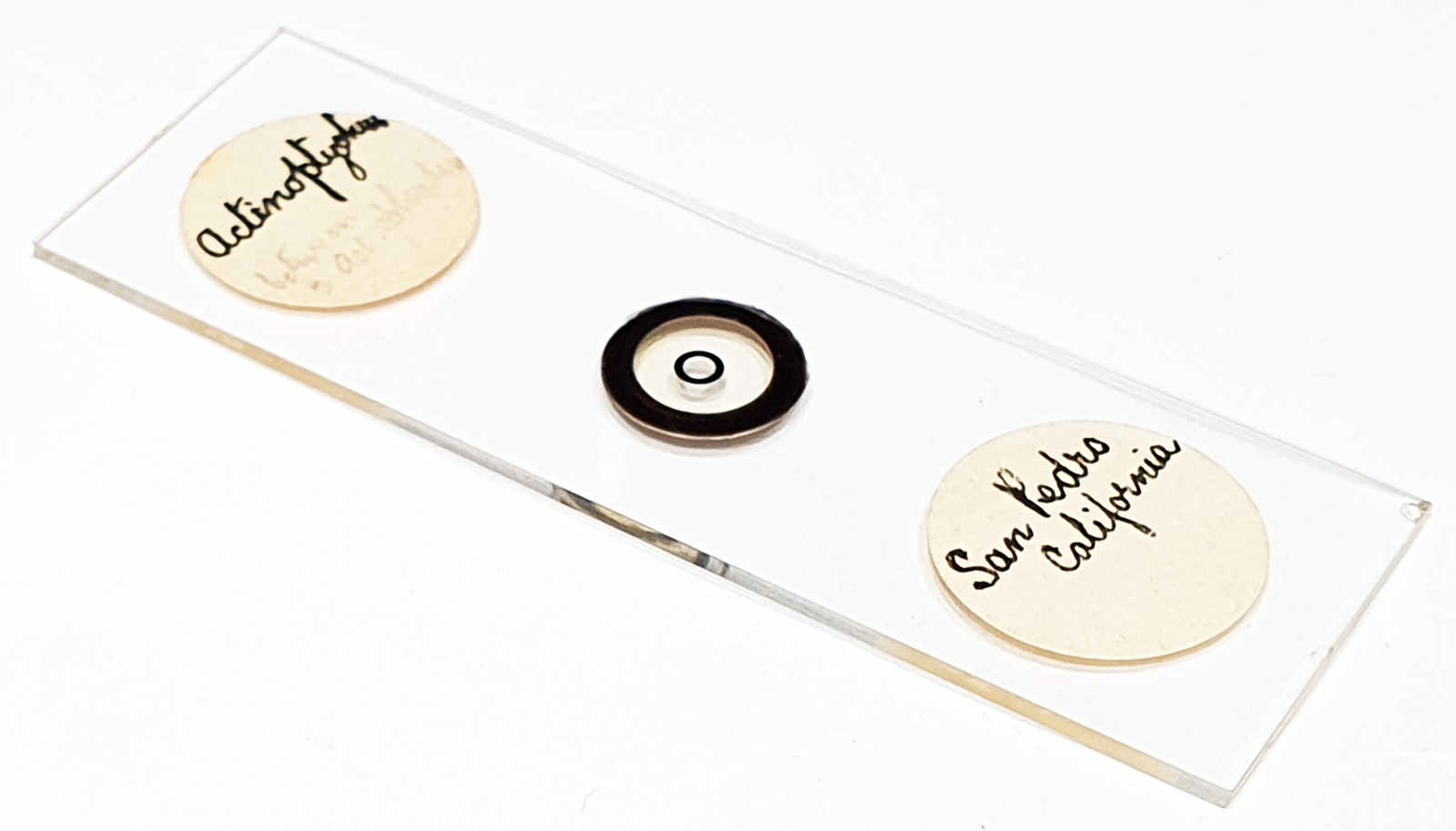


A slide labelled as Actinoptychus, and then in pencil “between 2 Act. splendens“, from San Pedro, California. No makers name, but this is by JA long. I’ll come back to a potential name in a minute.
Olympus BHB microscope using 450nm LED light. Main image of the central diatom, 63x Leitz Pl Apo 1.4 objective, oil immersion. Olympus Aplanat Achromat condenser, oil immersion, oblique lighting. 2.5x Nikon CF PL photoeyepiece. Monochrome converted Nikon d850 camera. 38 images stacked in Zerene (Pmax).
Back to the name for the central diatom. To me it does look different to the ones on either side. The maker presumably wasn’t sure about it, which is why it was left as ‘Actinoptychus‘. Looking in “Wornardt, W.W., Jr. 1967 . Miocene and Pliocene marine diatoms from California. Occasional Papers of the California Academy of Sciences 63:108 pp.” it looks to me like the one in Figure 68 which is labelled as an example of Actinoptychus splendens var. incisa, hence I am going with that but keeping the question mark after the name.